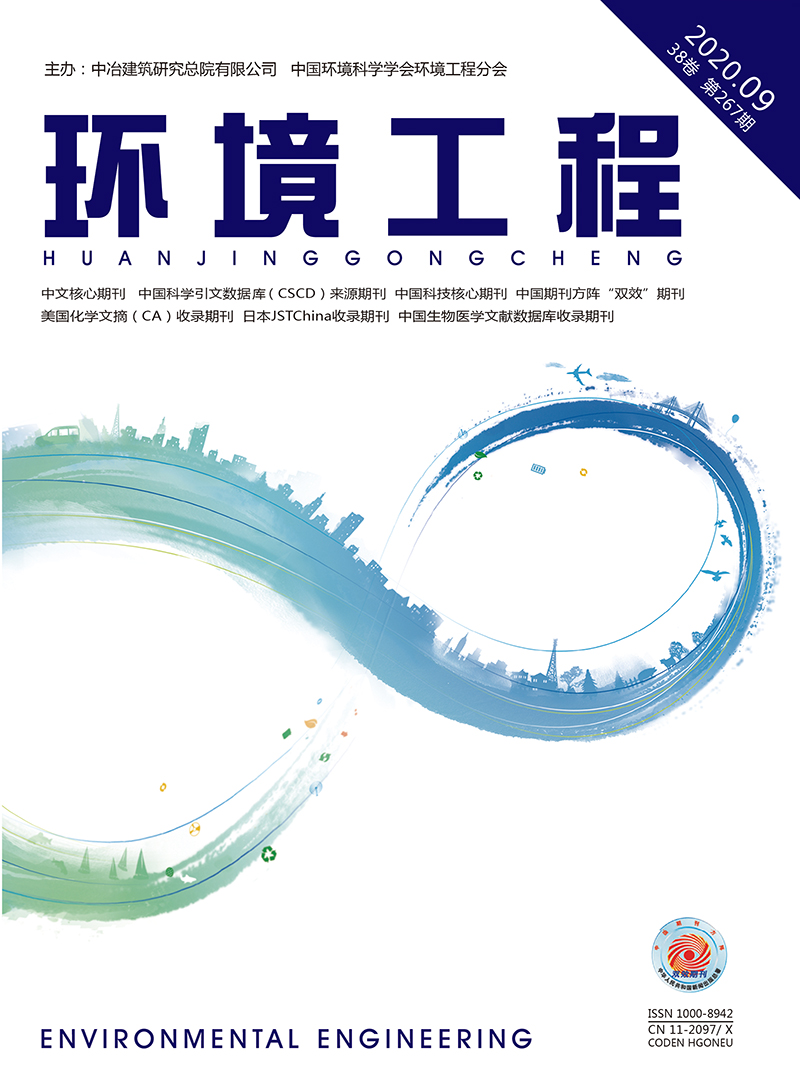|
ZENG R J, YUAN Z G, KELLER J. Enrichment of denitrifying glycogen-accumulating organisms in anaerobic/anoxic activated sludge system[J]. Biotechnology and Bioengineering, 2003, 81(4):397-404.
|
|
MIAO L, WANG S Y, LI B K, et al. Advanced nitrogen removal via nitrite using stored polymers in a modified sequencing batch reactor treating landfill leachate[J]. Bioresource Technology, 2015, 192:354-360.
|
|
刘小芳,郭海燕,张胜男,等. 聚糖菌反硝化影响因素及内碳源转化特性[J]. 化工学报, 2019,70(3):1127-1134.
|
|
ZHOU Y, PIJUAN M, ZENG R J, et al. Free nitrous acid inhibition on nitrous oxide reduction by a denitrifying-enhanced biological phosphorus removal sludge[J]. Environmental Science & Technology, 2008,42:8260-8265.
|
|
YE L, NI B J, LAW Y Y, et al. A novel methodology to quantify nitrous oxide emissions from full-scale wastewater treatment systems with surface aerators[J]. Water Research, 2014, 48(1):257-268.
|
|
PAN Y, NI B J, BONDP L, et al. Electron competition among nitrogen oxides reduction during methanol-utilizing denitrifification in wastewater treatment[J]. Water Research, 2013,47:3273-3281.
|
|
MCILROY S J, ALBERTSEN M, ANDRESEN E K, et al. "Candidatus Competibacter"-lineage genomes retrieved from metagenomes reveal functional metabolic diversity[J]. ISME J. 2014,8:613-624.
|
|
YANG Q, LIU X H, PENG C Y, et al. N2O production during nitrogen removal via nitrite from domestic wastewater:main sources and control method[J]. Environmental Science & Technology, 2009,43(24):9400-9406.
|
|
巩有奎, 王淑莹, 王莎莎, 等, 碳氮比对短程反硝化过程中N2O产生的影响[J]. 化工学报, 2011, 62(7):2049-2054.
|
|
APHA(American Public Health Association). Standard Methods for the Examination of Water and Wastewater[S]. Baltimore:Port City Press, 1998.
|
|
OEHMEN A, KELLER-LEHMANN B, ZENG R J, et al. Optimisation of poly-beta-hydroxyalkanoate analysis using gas chromatography for enhanced biological phosphorus removal systems[J]. Journal of Chromatography A, 2005, 1070(1/2):131-136.
|
|
OEHMEN A, ZENG R J, YUAN Z G, et al. Anaerobic metabolism of propionate by polyphosphate-accumulating organisms in enhanced biological phosphorus removal systems[J]. Biotechnology and Bioengineering, 2005, 91(1):43-53.
|
|
贾淑媛, 王淑莹, 赵骥等, 驯化后的聚糖菌对NO2--N和NO3--N内源反硝化速率的影响[J].化工学报, 2017,68(12):4731-4738.
|
|
RIBERA-GUARDIA A, MARQUES R, ARANGIO C, et al. Distinctive denitrifying capabilities lead to differences in N2O production by denitrifying polyphosphate accumulating organisms and denitrifying glycogen accumulating organisms[J]. Bioresource Technology,2016,219:106-113.
|
|
张建华, 彭永臻, 张淼,等. 不同电子受体配比对反硝化除磷特性及内碳源转化利用的影响[J].化工学报,2015,66(12):5045-5053
|
|
崔有为,金常林,王好韩,等. 碳源对O/A-F/F模式积累内源聚合物及反硝化的影响[J].环境科学,2019,40(1):336-342
|
|
WANG Y, GENG J, GUO G, et al. N2O production in anaerobic/anoxic denitrifying phosphorus removal process:the effects of carbon sources shock[J]. Chemical Engineering Journal,2011,172(2/3):999-1007
|
|
ZHU X, CHEN Y. Reduction of N2O and NO generation in anaerobic-aerobic (low dissolved oxygen) biological wastewater treatment process by using sludge alkaline fermentation liquid[J]. Environental Science & Technology, 2011,45:2137-2143
|
|
MIAO L, WANG S Y, LI B K, et al. Effect of carbon source type on intracellular stored polymers during endogenous denitritation (ED) treating landfill leachate[J]. Water Research, 2016, 100:405-412.
|
|
WEI Y, WANG S Y, MA B, et al. The effect of poly-b-hydroxyalkanoates degradation rate on nitrous oxide production in a denitrifying phosphorus removal system[J]. Bioresource Technology,2014, 170:175-182.
|


 Login
Login Register
Register E-alert
E-alert






 DownLoad:
DownLoad: